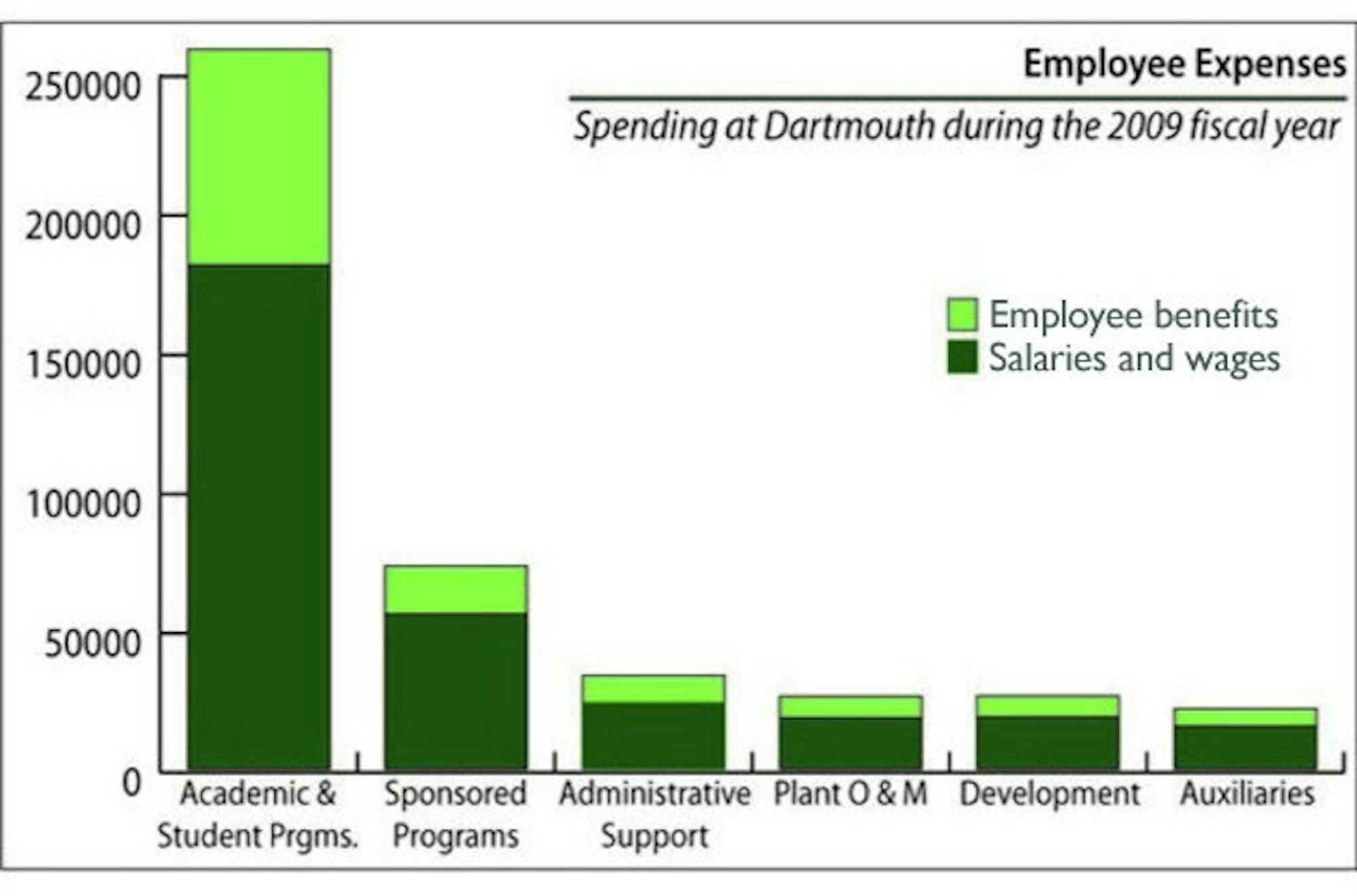The College cut roughly 130 employees from its workforce during last year's budget reductions, in addition to enacting a hiring freeze. More than 70 staff members voluntarily left the College through a retirement incentive plan, while 60 employees were laid off. The involuntary layoffs saved the College $4.5 million in expenditures, or roughly $75,000 per staff member, while the retirement incentive plan saved approximately $1.6 million.
The layoff plan included a lump-sum payment to help cover health care benefits, as well as a severance package determined by the number of years the employee worked at the College. Administrators have not yet announced whether similar concessions will accompany future layoffs.
College officials have also not yet said whether they will eliminate faculty positions, which could affect potential savings. Tenured and tenure-track faculty members were exempted from last year's workforce reductions, but no decision has been announced on whether faculty members will be included in the next round of layoffs.
Even without severance and benefits payments or a faculty exemption, previous figures suggest that layoffs alone will not be enough to address the current shortfall. Larger savings will likely require departments to restructure their operations and reduce their programming and course offerings, although layoffs are an inevitable part of any restructuring plans, several experts told The Dartmouth.
Colleges and universities are often personnel-heavy relative to other types of organizations, with as much as 80 percent of the budget spent on employee costs, according to Jane Wellman, executive director of the Delta Project on Postsecondary Education Costs, Productivity and Accountability.
"That's the lion's share, by a long shot," Wellman said. "You have to make changes in personnel in order to restructure costs. No other option."
During the 2009 fiscal year, Dartmouth spent roughly $438 million on employee salaries and benefits more than 59 percent of its total budget, according to the College's 2008-2009 financial statement.
Measures short of restructuring renegotiating contracts and leases, or reducing energy costs through conservation are good management decisions, but are not enough to "save huge gobs of money," Wellman said.
Making the College's administrative structure more efficient could also result in significant savings, according to David Blanchflower, a Dartmouth economics professor and former member of the Bank of England's Monetary Policy Committee. Blanchflower recently called on the College to implement aggressive cuts to avoid future financial shortfalls in a column in The Dartmouth.
He said, in an interview with The Dartmouth, that College President Jim Yong Kim will need to "make the tough decisions" about what is central to Dartmouth's teaching mission.
"There's been a significant growth in non-faculty staff, a nearly unsustainable increase," Blanchflower said. "That would certainly be something you could look at."
Blanchflower declined to speculate about where workforce reductions should be made or how much the College can save through layoffs. Kim should develop his own set of priorities to guide budget reductions, Blanchflower said.
"People should prepare for the fact that the world has changed," he said.
While any significant restructuring will involve personnel changes, assessing whether layoffs will be an effective savings measure is more complicated, James Baron, a professor at the Yale School of Management, said in an e-mail to The Dartmouth.
Layoffs can help reduce spending more quickly than other efforts, Baron said, although layoffs' long-term effectiveness depends on how they are implemented. Colleges and universities often structure layoffs to minimize internal political dissent, instead of focusing on streamlining operations, Baron said.
Layoffs may also have unintended consequences that increase costs, Baron said, pointing to the possibility that departments may switch to more expensive outside vendors for services.
Wellman and Baron noted that reducing benefits and imposing wage furloughs which allow institutions to defer salary payments without laying off employees are alternatives to permanent workforce reductions.
Furloughs are only effective when an institution expects revenues to return to previous levels relatively quickly, Wellman said. If revenues appear stagnant, furloughs are merely "a way of postponing the inevitable."
Because institutions' revenue is unlikely to increase quickly, layoffs are inevitable to cut costs, she said.
"There's not really a way to make big budget cuts without going after positions," Wellman said.
Wellman said that changing employee benefit structures should be colleges' "number-one priority" in reducing long-terms costs. Employee benefits have long been increasing at a faster rate than salaries.
Reducing employee benefits, however, is not an effective short-term solution, Wellman said.
"I think you can't squeeze money out of benefits in a current year," she said. "You can renegotiate contracts in the future. And for pensions, you can't take benefits away from people that currently have them."




